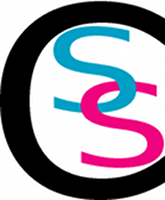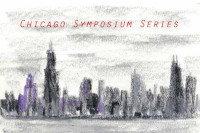Breakout Sessions for Friday, February 11, 2011
Due to advances in technology, our ability to visualize calculus has improved at a remarkable rate for the past 30−40 years. In this talk, I will give examples of early calculus textbook art (beginning with L'Hôpital) and show its evolution to the current state of the art. Most of the talk will be devoted to showing interactive figures that support a three-semester calculus sequence and discussing how best to use them in the classroom.
This break-out will provide a hands-on opportunity to discuss and practice simple techniques that faculty can use to uncover student ideas in large classroom settings. Modern conceptual change theory suggests that students will only be able to adopt scientific models if previously held ideas are challenged and found lacking. Unfortunately, challenging student ideas is difficult in many sciences, particularly where phenomena, such as geologic time or DNA, are not directly observable. This is compounded by the large size of many college-level courses. Most instruction at the college level, whether lecture or inquiry-based, is focused on conveying scientific models to students. This break-out is based on the idea that students should be encouraged to openly discuss or share pre-existing ideas prior to exposure to more scientific concepts. This sharing of ideas allows 1) students to recognize disparities between previous experiences or instruction and ongoing instruction; and 2) faculty to recognize the broad range of ideas that students bring to any classroom encounter. Personal experiences with students of many ages will be used to exemplify techniques for collecting and using student ideas, and participants will be encouraged to practice these techniques during the break-out. Participants are encouraged to bring their own techniques with them to share.
Elizabeth Davis-Berg, Biology, Columbia College Chicago; Dan Jordan, Mathematics, Columbia College Chicago; Heather Minges Wols, Biology, Columbia College Chicago
This breakout session will focus on the issues of consistency in multiple section courses. Is it necessary for multi-section courses to be consistent? What degree of consistency is necessary and how do you maintain this across sections? These questions have stemmed from our discussions as faculty in different disciplines who are trying to ensure that students in each section of a multi-section course have similar educational experiences.
Often, math courses use the same syllabus, textbook, evaluation methods, and follow the same course schedule. Generally, science courses are not as rigidly controlled, only using the same textbook and learning objectives. At our institution, mathematics and the sciences are housed in the same department. This confluence of disciplines has led to a variety of interesting discussions about the methods and expectations of course management.
In this panel-led discussion, issues such as coordination, text selection, evaluation, topics covered, syllabus, and teaching style will be discussed. The speakers will briefly share their experiences and then lead a discussion about the relevant issues. The Chicago Symposium Series provides a unique opportunity to discuss multi-section consistency with faculty from different disciplines and institutions.
Gretchen Adams, Chemistry Merit Program, University of Illinois at Urbana-Champaign; Tracey Hickox, Integrative Biology Merit Program, University of Illinois at Urbana-Champa
The Merit Program at the University of Illinois directly responds to the challenge of having enough trained citizens in the science and technology sectors. The main objective of the program is to recruit and retain students in STEM fields. Special importance is placed on recruiting underrepresented minorities, women, and students from small high schools who are required to enroll in first-year general chemistry, biology, and/or mathematics. It is designed to support and encourage students in their studies of these subjects by utilizing Dr. Uri Treisman’s model of collaborative instruction methods. Because of the program’s demonstrated success, we received NSF funding to 1) expand our student base to students that have not yet declared a major, with the intent that they will choose a career in a math, science, or engineering field, and 2) disseminate the Merit model by training current instructors at the high school and college levels to adopt their own Merit-style programs at their home institutions.
We will give an overview of the Merit Program pedagogy and allow participants to experience it through small group interactions. We will discuss the results of our qualitative and quantitative studies related to the expansion efforts at the U of I and to the MIST Summer Teacher Workshops. We will also provide information about future Summer Workshops as well as some sample materials.
Inquiry based learning has become a central objective of science teaching, but designing such activities is not a straightforward process. In this workshop, we share a repertoire of seven inquiry activity structures. These structures are intended to be more abstract than specific lesson plans, but more tangible than general goals. They are formed by considering what is common across different inquiry activities. Participants will use the framework to critique "flawed" activities and adjust them towards effective inquiry activities. Participants will also be invited to share their experiences using the inquiry activity structures during the second (May 11th) symposium.
Theresa Carlton, Harold Washington College; and Mary Pat Sheppard, Malcolm X College
Nationally, remediation and college-preparedness, especially in mathematics, is of great concern. Across the country, nearly 50% of entering college students require remediation in mathematics. At the City Colleges of Chicago (CCC), that number reaches over 90%. During this breakout session, we will discuss the remediation needs of CCC students, their transitions through the developmental math sequence, and the results of the Quantitative Reasoning Assessment given to 1200 students at Harold Washington College. In the process, we hope to elicit some of your experiences in developmental mathematics courses, and discuss opportunities for growth and improvement in developmental education.

